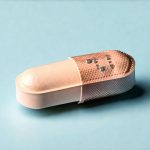Hormonal birth control is a cornerstone of reproductive healthcare for millions worldwide, offering reliable contraception and often managing conditions beyond just preventing pregnancy, such as acne or heavy menstrual cycles. While widely used and generally safe, the intricate relationship between hormones and bodily functions means that hormonal birth control can sometimes have unexpected side effects – and one area where this frequently arises is bladder health. Many women report changes in urinary frequency, urgency, or even incontinence while on hormonal contraceptives, leading to questions about why these connections exist and what can be done to manage them. Understanding the complex interplay between estrogen, progesterone (or their synthetic equivalents found in birth control), and the bladder’s function is crucial for both those experiencing issues and healthcare providers aiming to provide informed care.
The bladder isn’t an isolated organ; it’s intimately connected to the entire endocrine system, responding directly to hormonal fluctuations throughout a woman’s menstrual cycle. These natural fluctuations impact the bladder’s capacity, sensitivity, and the strength of the pelvic floor muscles which support it. Hormonal birth control essentially modifies these naturally occurring cycles, introducing synthetic hormones that can alter how the bladder behaves. It’s important to remember that everyone reacts differently to hormonal changes; some individuals may experience no noticeable effects on their bladder function, while others might find significant changes occur. This article will explore the potential links between hormonal birth control and bladder health, examining possible mechanisms, common symptoms, and strategies for managing any associated issues.
The Hormonal Landscape and Bladder Function
The bladder’s functionality is significantly influenced by estrogen and progesterone – two key hormones in the female reproductive system. Estrogen plays a vital role in maintaining the urothelium, the lining of the bladder, keeping it healthy and resilient. It also contributes to the strength and elasticity of pelvic floor muscles. Progesterone, on the other hand, can sometimes have a more complex impact. While it generally supports muscle relaxation (which is necessary for uterine contractions during pregnancy), higher levels can potentially reduce bladder capacity in some individuals. Hormonal birth control fundamentally alters these hormonal balances.
Different formulations – pills, patches, rings, injections, and IUDs – deliver varying doses and types of hormones, leading to diverse effects on the body. Progestin-only methods may have different impacts than combined estrogen-progesterone options. The synthetic progestins used in birth control aren’t identical to naturally occurring progesterone, and their effects can differ. This is why some women might experience bladder issues with one type of hormonal contraception but not another. Furthermore, the body’s individual sensitivity to these hormones plays a major role; what affects one woman significantly may barely register for someone else.
Importantly, it’s not always about an increase or decrease in hormone levels. The sudden shifts in hormonal levels – even if within a normal range – can also contribute to bladder issues. Starting or stopping birth control, switching formulations, or simply cycling through the active and inactive pills in a monthly pack all represent hormonal transitions that could potentially impact bladder function. This is why symptoms may appear when starting birth control, during the hormone-free week of combined pills, or after discontinuing contraception altogether.
Potential Mechanisms Linking Hormonal Birth Control to Bladder Issues
The precise mechanisms by which hormonal birth control can affect the bladder are still being researched, but several theories exist. One prominent idea revolves around estrogen’s influence on the urethral sphincter, the muscle that controls urine flow. Lower estrogen levels (which can occur with certain types of hormonal contraception) may potentially weaken this sphincter over time, leading to stress urinary incontinence – leakage during activities like coughing, sneezing, or exercise. It’s crucial to note this isn’t a universally experienced effect and is more likely in women predisposed to incontinence.
Another possible mechanism involves the impact on bladder sensitivity. Hormonal fluctuations can alter the nerves that control bladder function, making it more sensitive to stretching and triggering feelings of urgency even when the bladder isn’t full. This increased sensitivity can lead to frequent urination and a constant urge to go. Additionally, changes in fluid balance caused by hormonal birth control – affecting how the kidneys process fluids – could also contribute to increased urine production and subsequent bladder pressure.
- It is believed that synthetic hormones might affect the function of the detrusor muscle—the muscle responsible for bladder contraction—potentially leading to involuntary contractions and urgency.
- Alterations in pelvic floor muscle tone, influenced by hormonal changes, can exacerbate existing bladder issues or contribute to new ones.
- Individual differences in hormone receptor density and metabolic rates also play a role in how the body responds to hormonal birth control.
Common Bladder Symptoms Associated with Hormonal Birth Control
Women on hormonal birth control may experience a wide range of bladder symptoms, varying in severity from mild annoyance to significantly disruptive issues. Urinary frequency – needing to urinate more often than usual – is one of the most frequently reported complaints. This can be particularly noticeable during the hormone-free week of combined pills or when switching between different formulations. Closely related to frequency is urgency – a sudden, compelling need to urinate that’s difficult to delay.
Another common issue is stress urinary incontinence, characterized by involuntary leakage of urine during physical activity or moments of increased abdominal pressure. While often associated with aging and childbirth, it can also be triggered or worsened by hormonal changes. Some women may experience a feeling of incomplete bladder emptying, even after urinating, which can be frustrating and uncomfortable.
- Less common but possible symptoms include:
- Nocturia (frequent urination at night)
- Dysuria (painful urination), although this is less likely to be directly caused by hormonal birth control and should be investigated further with a healthcare provider.
- Increased risk of urinary tract infections (UTIs), potentially due to changes in vaginal flora affected by hormones. If you experience frequent UTIs, it’s worth exploring can birth control and its influence on bladder health.
Managing Bladder Issues Related to Hormonal Birth Control
If you suspect your hormonal birth control is contributing to bladder problems, the first step is to consult your healthcare provider. They can help determine if your symptoms are indeed related to contraception or another underlying condition. Do not self-diagnose or attempt to treat these issues without professional guidance. Several strategies may be employed to manage these concerns:
- Consider Alternative Contraception: If the bladder issues are significant and clearly linked to hormonal birth control, exploring non-hormonal options like copper IUDs, barrier methods (condoms), or fertility awareness methods might be considered.
- Switch Formulations: Switching to a different type of hormonal contraception – for example, from combined pills to progestin-only pills or from pills to an IUD – may alleviate symptoms if the original formulation is the culprit. A lower dose formulation could also make a difference.
- Pelvic Floor Exercises (Kegels): Strengthening the pelvic floor muscles can improve bladder control and reduce stress urinary incontinence. These exercises are often recommended by physical therapists specializing in pelvic health. Can certain exercises also play a role, so be mindful of your body’s response.
- Fluid Management: Adjusting fluid intake – avoiding excessive caffeine, alcohol, and sugary drinks – can help minimize bladder irritation. Drinking adequate water is still important but timing fluids strategically throughout the day might be beneficial.
- Bladder Training: This involves gradually increasing the intervals between urination to retrain the bladder to hold more urine. A healthcare provider or pelvic floor therapist can provide guidance on this technique.
It’s crucial to remember that hormonal birth control is a valuable tool for reproductive health, but it’s not without potential side effects. Being aware of these possibilities and proactively addressing any concerns with your healthcare provider is essential for maintaining both contraceptive efficacy and overall well-being. If you suspect birth control methods are impacting how often you get UTIs, seek medical advice.





















